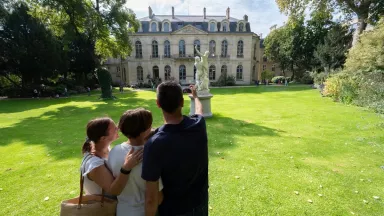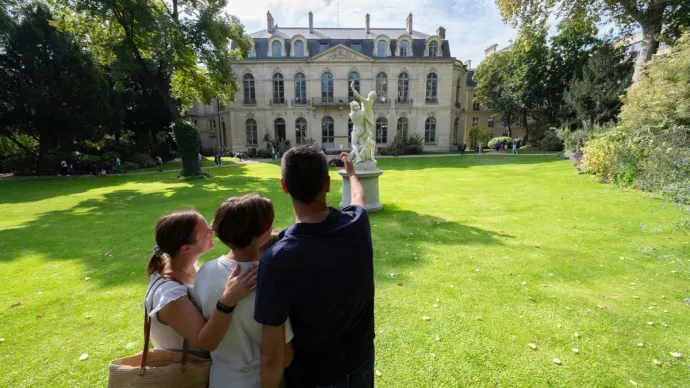
The ministry’s heritage
Partager la page
The ministry of Agriculture has a rich history built around an exceptional heritage, which you can visit during European Heritage Days on September 20-21, 2025. Follow the guide!
The Hôtel de Villeroy
Entry via the central front steps. Start of the tour on the first floor after walking up the staircase on the right. The work carried out during the first half of 2008 restored the walls and ceilings of the mansion to the condition they were in when the building was constructed (1724)*.
-
These rooms were initially designed to serve as receptions. They are still used for this purpose, but they now mainly serve as meeting rooms and individual or collective workspaces.

1. GRAND DINING ROOM - Large Napoleon III chandelier with fifty-four lights in gilded bronze; four Louis XVI-style wall lights, also in gilded bronze. 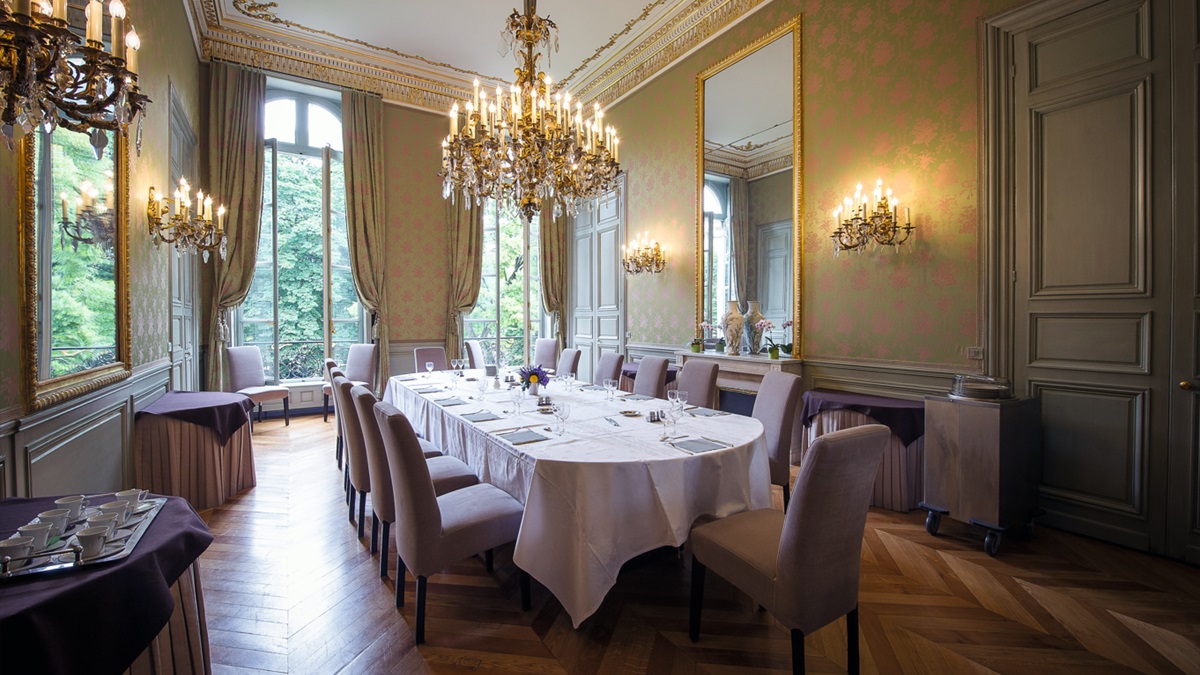
2. COUNSELLORS’ ROOM - Louis Philippe gilded-bronze chandelier and wall lamps. Restored in 2012. 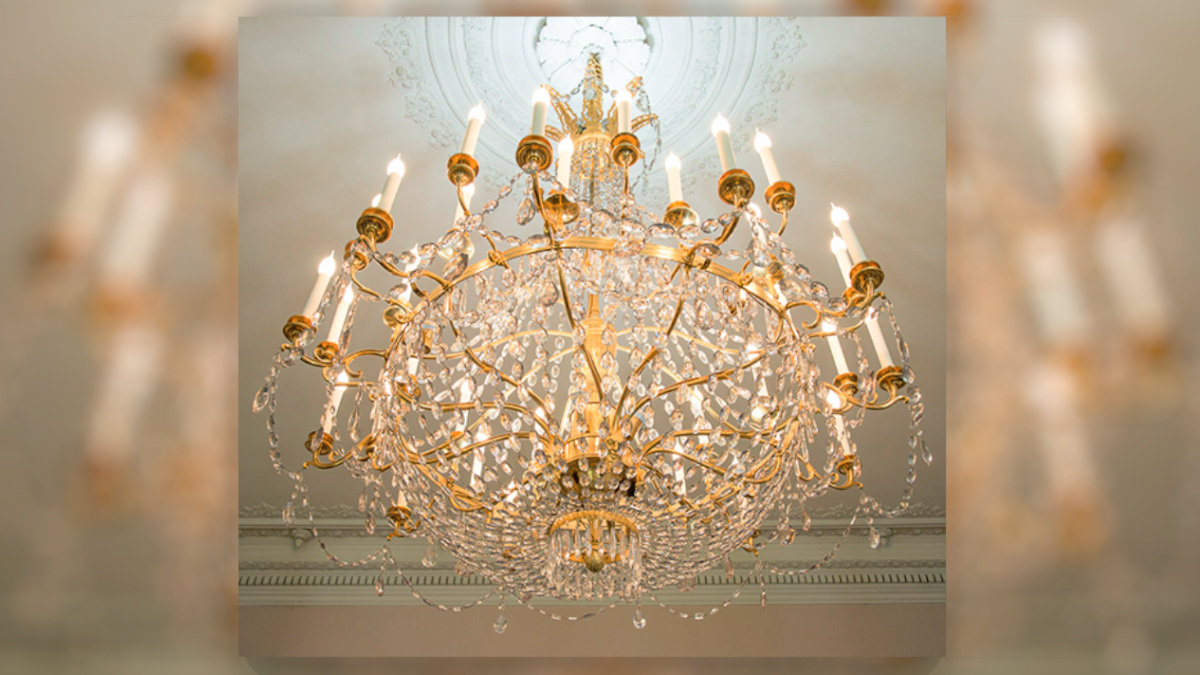
3. GRAND DRAWING ROOM - Empire period (1804-1815) crystal and gilded bronze chandelier with 36 lights, restored in 2017. This was the minister's office until 1998. 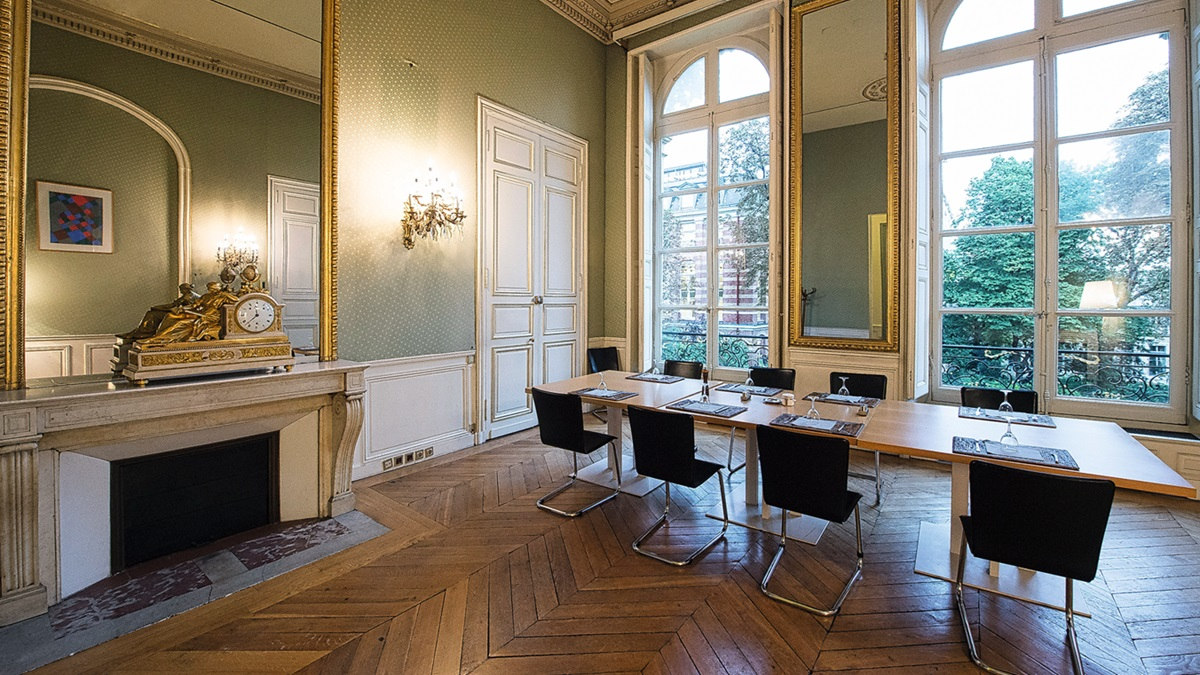
4. GREEN ROOM - White alabaster marble and gilded bronze astronomical clock (with the dial featuring “Lépine, Clockmaker to the Empress” signature). 
5. ANTECHAMBER AND PORTRAIT GALLERY - Portraits of ministers and secretaries of state. 17th-century Gobelins tapestries: La réddition de Marsal* and Le vol de l’âne. Empire period chandelier. Morat Barrel: one of the 60 made from the Morat oak tree, which was cut down in 2004 due to disease. It came from the Colbert forest in Allier and probably began growing around 1660. -
The rooms opening onto the garden (the antechamber, the reception room and the bedroom) were originally used as social, family or private spaces. They are now occupied by the minister and their close aides.

6. GRAND STAIRCASE - Wrought iron handrail* adorned with interlocking Ls (King Louis XV’s cipher). Tapestry inspired by Bram Van Velde’s “Nocturne”. 
6. GRAND STAIRCASE - Focus on iron handrail* adorned with interlocking Ls (King Louis XV’s cipher). 
8. MINISTER’S OFFICE - Three early 21st-century armchairs made out of wood and brown leather, and an Empire period chandelier. Furnishings by Andrée Putman (1925–2013), an internationally renowned French interior architect and designer, who most notably designed the interiors of Air France Concorde planes. 
9. BUREAU DU DIRECTEUR DE CABINET - Gobelins tapestry (17th century) La terre*, from Les Éléments series, inspired by Charles Le Brun. Clock with Roblin’s signature (1870). -
1724 : Swiss banker Antoine Hogguer de Saint-Gall, Baron of Presles, has a small urban mansion built for the Comédie-Française actress Charlotte Desmares by the architect Debias-Aubry on a plot of land in the Saint-Germain district.
1726 : Hogguer goes bankrupt and leaves Paris. The mansion would subsequently be rented out to the ambassadors of Holland and England. As a result, Horace Walpole would live there until 1730.
1735 : The mansion is sold by Hogguer’s creditors. François-Louis de Neufville, the Marquis of Alincourt and, later, the Duke of Villeroy, buys it. Driven by his taste for pomp and luxury, in 1746, he asked the architect Le Roux to expand the building by adding a circular lounge to the west side (on the left side of the mansion).
1766 : Upon the Duke of Villeroy’s death, his nephew Gabriel-Louis inherits the mansion. He threw lavish parties, most notably for the King of Denmark, Christian VII. A small theatre, which is no longer part of the mansion, was even set up on the first floor.
1768 : Gabriel-Louis de Villeroy sells the mansion to the Count of Tessé. As chief equerry to Marie Leczinska he planned to have the Queen’s stables set up there. The plan would subsequently be abandoned. The Count of Tessé occupied the building up until 1790, when he was forced into exile.
1794 : The building is confiscated as a bien national (national asset) and acquired by the State. The Directory then set up the Inspection Générale du Service de Santé Militaire(1), which included Antoine Augustin Parmentier.
1800 : The Count of Tessé returns from exile, gets his usufructuary rights reinstated and moves back into the mansion until 1805. After this date, the Inspection Générale du Service de Santé Militaire took back possession of the building.
1823-1831 : The Hôtel houses the École d’Application du Corps Royal d’État-Major(2) up until 1827, and then the General Directorate of Highways and Bridges up until 1831.
1831 : The mansion is home to French Commerce, Public Works and Agriculture Ministers. Adolphe Thiers would reside there in this capacity.
1851 : Under the Second Empire, it is home to the Minister of the General Police and then the President of the Council of State. It would serve as the headquarters of the French Ministry of Trade and Industry before becoming the headquarters of the single Ministry of Agriculture upon its creation by Léon Gambetta on 14 November 1881.
1881 : Construction begins on the current façade on Rue de Varenne (image), designed by the architect Brune.
1930 : Following the destruction of the Hôtel de Castries, a rotunda is added to the east side (on the right side of the mansion), symmetrical to the one constructed in 1746.
Other places of the ministry
-
On 14 November 1881, construction of the Sully wing began on the current façade of the Ministry of Agriculture, designed by the architect Brune.
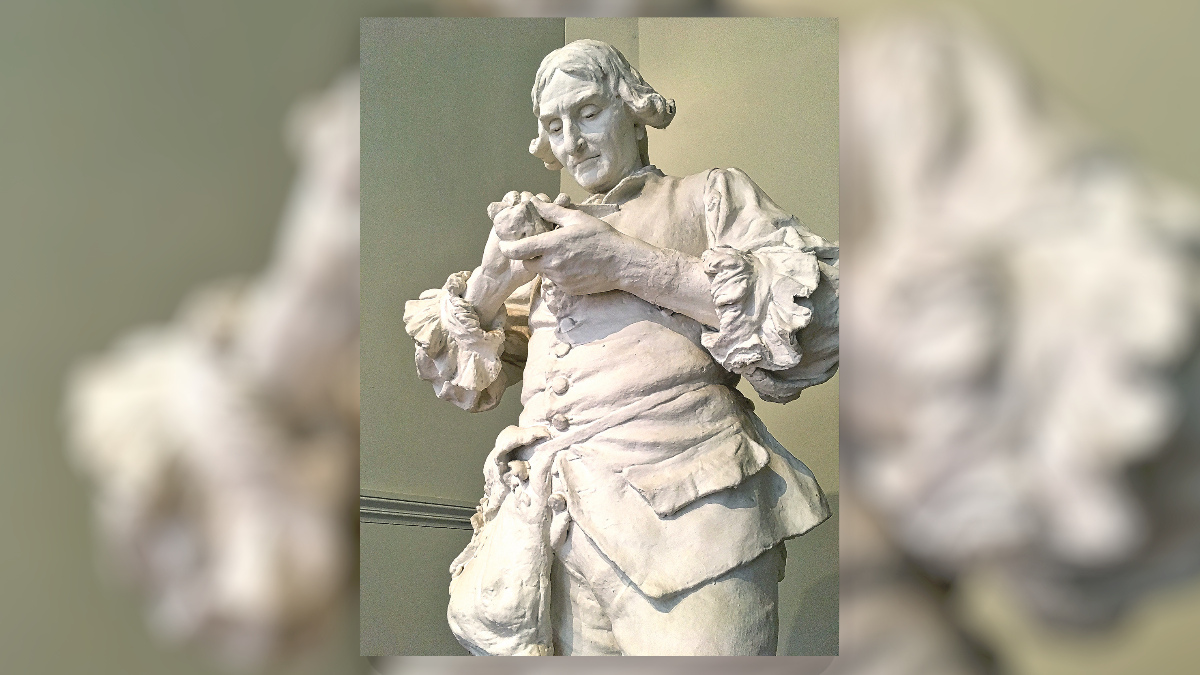
10. PARMENTIER HALL - Antoine Augustin Parmentier plaster statue by Adrien Étienne Gaudez (1887), at the end of the Sully Hall. 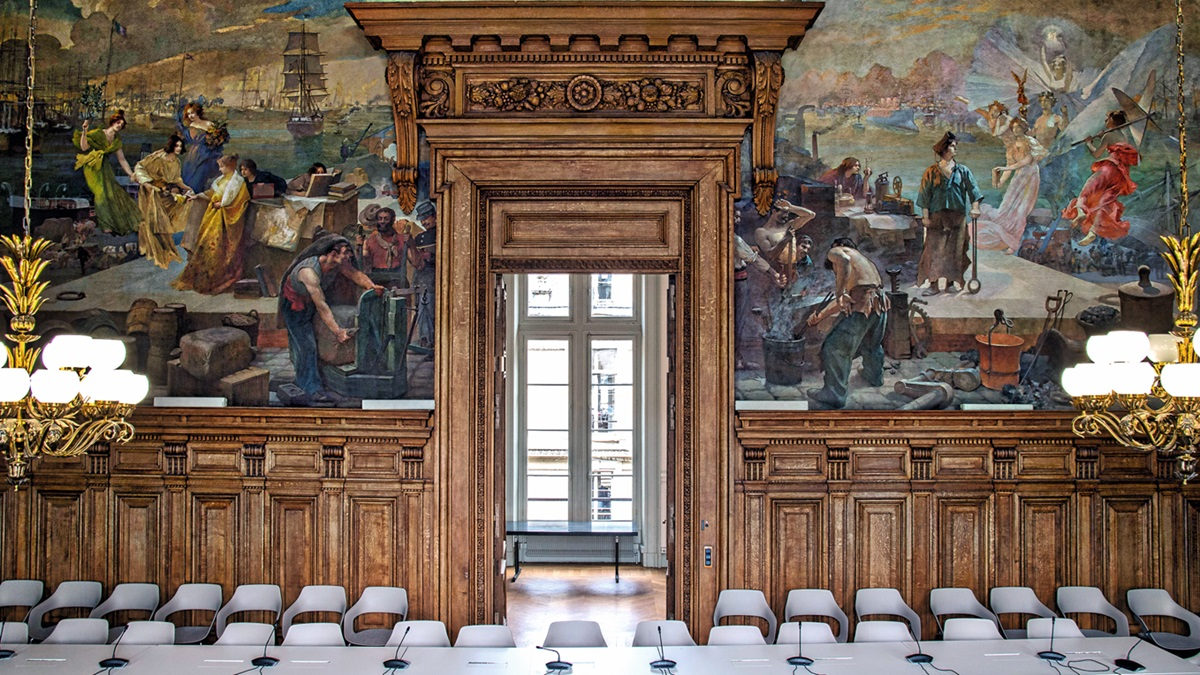
11. SULLY ROOM - Incredible decorative ensemble: a coffered ceiling decorated with allegories from between 1885 and 1887; frescoes by the painter Jean-Paul Sinibaldi, student of Alexandre Cabanel: Célébration du Commerce et de l’Industrie (1898) and Célébration de l’Agriculture (1901); and a monumental fireplace topped by two nested sculptures, allegories for trade and agriculture. -
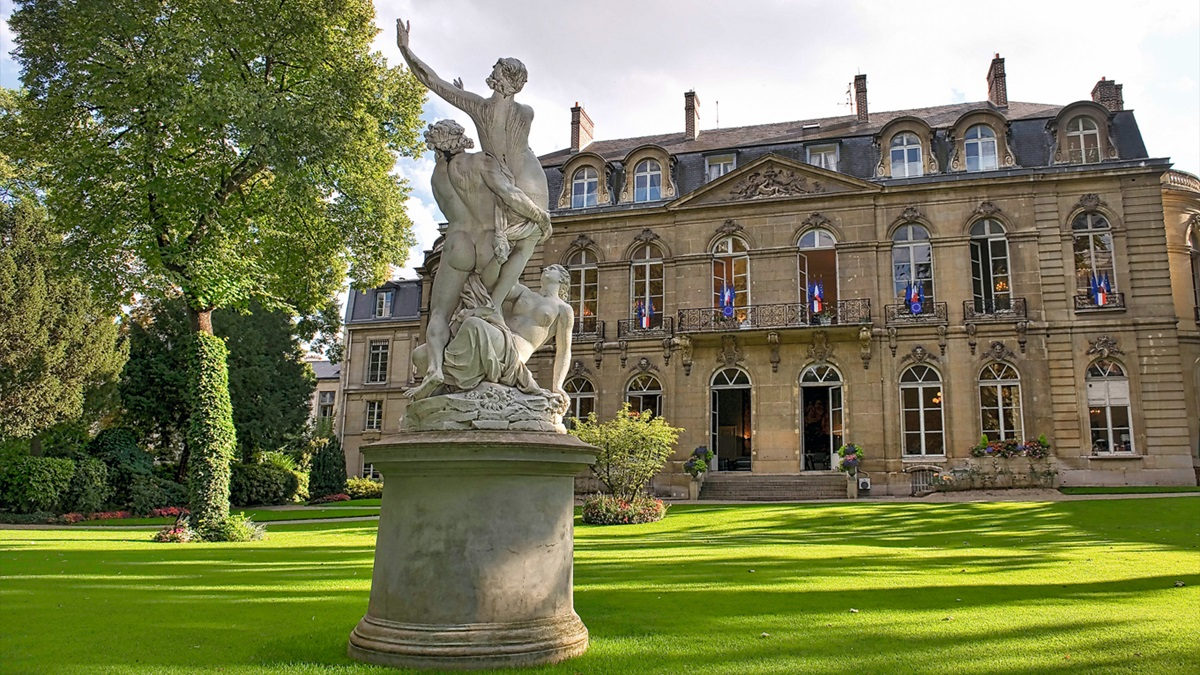
THE GARDEN - At the centre of a large lawn stands a copy of the sculpture depicting Proserpina’s abduction by Pluto, created by the sculptor Suchelet. The original of this sculpture, created by Girardon under Louis XIV, can be found in the Colonnade Grove in the gardens of Versailles. A vegetable garden was created in 2013, as well as eight beehives and an insect hotel.
Historical and political figures
-
Maximilien de Béthune, Duke of Sully, (1559-1641), commonly known as Sully, was a friend, the counsellor and the prime minister of Henri IV, King of France and Navarre. As the Superintendent of Finances, he had a particular interest in agriculture, which was the greatest wealth-producing activity at that time. In order to increase production, he authorised the free exportation of grain and wine from one province to another. The famous maxim “tilling and grazing are the two teats of France” is credited to him.
Antoine Augustin Parmentier (1737-1813) was a French military pharmacist, agronomist and nutritionist. He was a trailblazer in food chemistry and agrobiology and is particularly well known for promoting the nutritional benefits of potatoes.
-
Henri Queuille, four times Minister of Agriculture from 1924 to 1940, was the face of the peasant opposition to the Vichy government, having called on French citizens to resist the occupying forces from London in 1943. He also notably founded the Caisse Nationale de Crédit Agricole and supported the mechanisation of farms.
François Tanguy-Prigent, a Breton farmer who became an elected representative in the Popular Front in 1936 and was Minister from 1944 to 1947, strove to protect farmers by guaranteeing the rights of sharecroppers vis-à-vis landowners and by passing the tenant farming legal framework.
Edgard Pisani (Minister from 1961 to 1966), an early résistant, decisively pushed the farming world into the modern era. He cofounded the Common Agricultural Policy (CAP) and was also the architect of the Agricultural Orientation Law, which supported the major changes in French agriculture at the time.
Jacques Chirac is the only French Minister of Agriculture to become the President of the Republic. As the Minister of Agriculture and Rural Development between 1972 and 1974, he regularly attended the Paris Agricultural Show, staunchly stood up for the CAP and masterminded the first mountain farming assistance policy.
Other Ministers of Agriculture also left a lasting impression: Edith Cresson (1981-1983) and Michel Rocard (1983-1985) would both go on to become Prime Minister. Michel Barnier (2005-2009), twice a European Commissioner, chief Brexit negotiator, Prime Minister in 2024.
Recent Ministers are: Stéphane Le Foll (2012-2017), Stéphane Travert (2017-2018), Didier Guillaume (2018-2020), Julien Denormandie (2020-2022), Marc Fesneau (2022-2024) and Annie Genevard (2024).
Audiovisual heritage, 100 years of agriculture on film
The ministry has produced, screened and stored documentaries on the rural world since the early 20th century, with more than 300 filmed between 1945 and 1957.
They are available to view on MédiaStore and on its website, in the “heritage” section.
An * in the text indicates an element listed as a historical monument.
Credits : Cheick Saidou, Pascal Xicluna, Xavier Remongin / agriculture.gouv.fr
Download
Voir aussi
Découvrez le ministère de l'Agriculture et son patrimoine séculaire
20 septembre 2025Patrimoine
